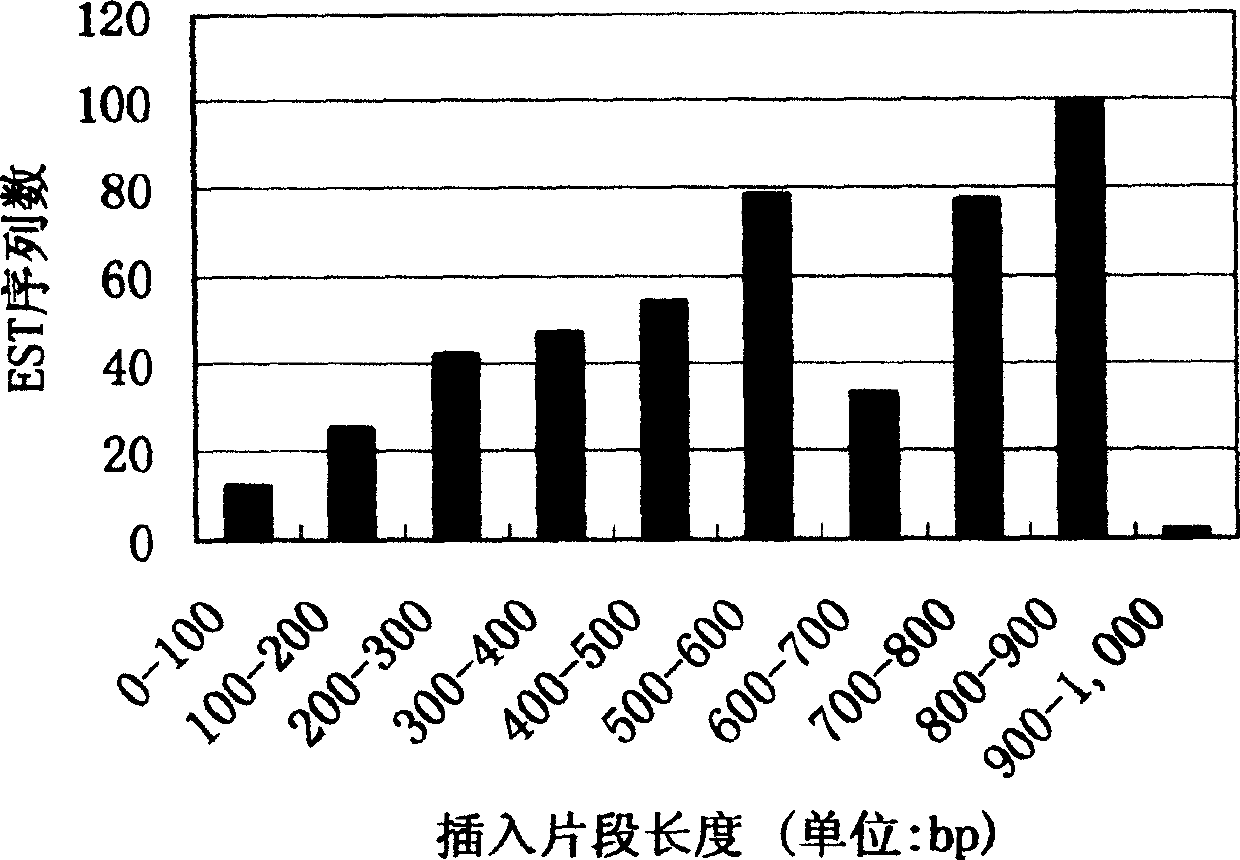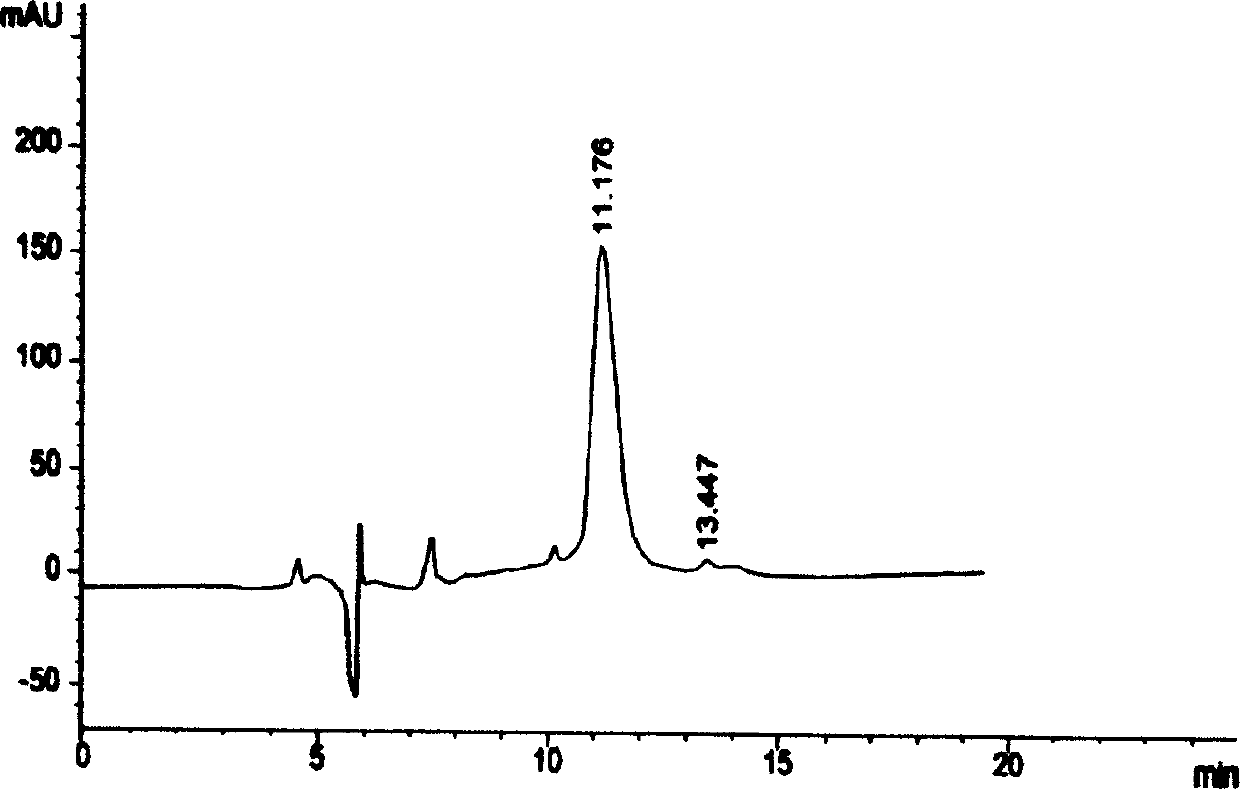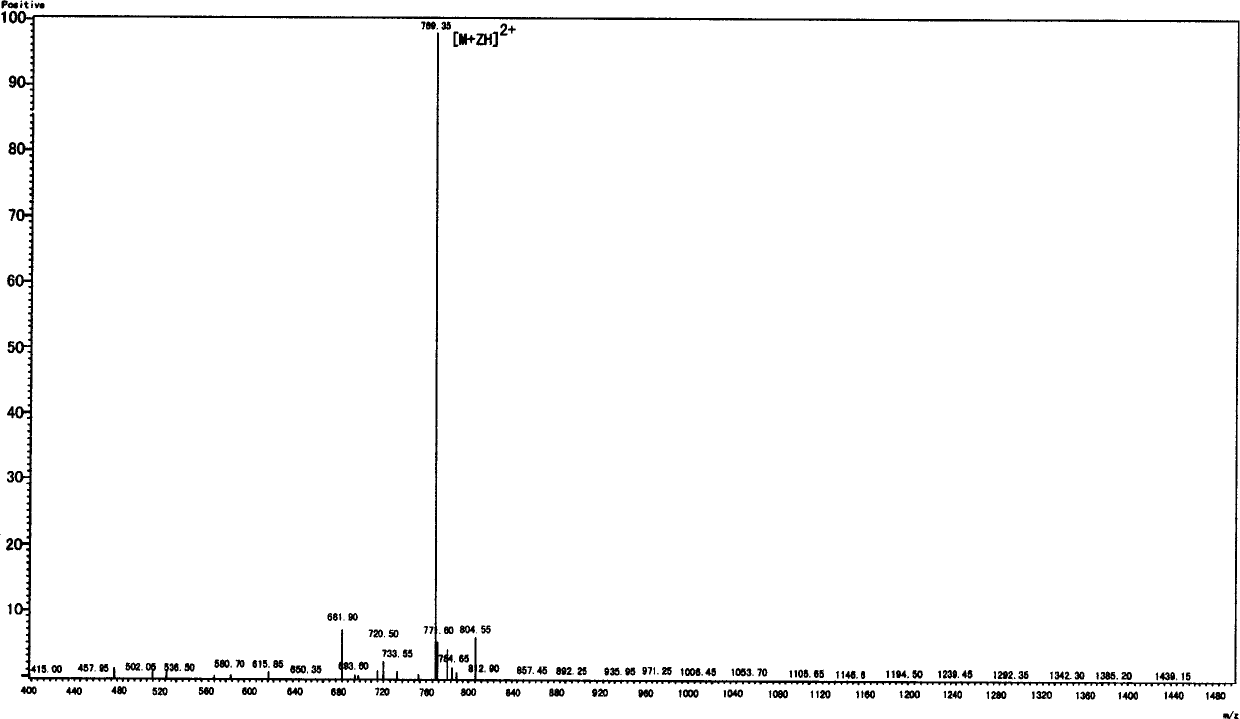South China sea conus littertus linnaeus nervotoxin and its coding sequence and use
A neurotoxin and sequence technology, which can be used in nervous system diseases, medical preparations containing active ingredients, animal/human peptides, etc.
- Summary
- Abstract
- Description
- Claims
- Application Information
AI Technical Summary
Problems solved by technology
Method used
Image
Examples
Embodiment 1
[0037] Example 1: Construction of the cDNA library of the signal cono venom tube in the South China Sea and EST sequence analysis
[0038] Extraction of total RNA and synthesis of cDNA: Isolate the venomous tubes of the signal cone snail in the South China Sea, and extract the total RNA of the virulent tubes according to the instructions of Gibco BRL's TRIZOL LS reagent. Take 1 μg signal cone snail venom total RNA with SMART III olignuclotide (5'-AAGCAGTGGTATCAACGCAGAGTGGCCATTATGGCCGGG-3') and CDSIII / 3'PCR primer (5'-ATTCTAGAGGCCGAGGCGGCCGACATG-d(T) 30 N -1 N-3') was reverse transcribed to synthesize the first strand to obtain 10 μl of cDNA first strand product.
[0039] Construction and identification of cDNA library of signal cone venom tube: take 1.5 μl of cDNA for ligation reaction, 5 μl of reaction system, transform 1 μl of it, take 5 ul of transformation liquid to plate separately, take 300 ul of transformation liquid for shaking total library colonies. The number of s...
Embodiment 2
[0041] Example 2: Determination and Analysis of Neurotoxin Gene lt14.1 Sequence
[0042] The plasmid and sequence of the South China Sea signal cone snail neurotoxin gene lt14.1 are from 23 highly homologous EST sequences cloned from the cDNA library of the South China Sea signal cone venom venom gene in Example 1, and the neurotoxin gene lt14.1 is highly expressed The gene accounts for about 5% of all EST sequences. The bioinformatics analysis of No. A02 clone of No. 1 plate as an example shows that the length of its cDNA sequence is 523bp. The base sequence was analyzed by the tool software SEQTOOL, and the maximum reading frame was obtained, which was 195 bp in length and encoded a precursor peptide of 65 amino acid residues. The precursor peptide was found to be compatible with alpha conotoxin qcl.1 (accession number: gi|46405113|gb|AAS93422.1| ) have homology (Identities=21 / 59 (35%), Positives=33 / 59 (55%)). Further analysis showed that the amino acid residues 1-20 of th...
Embodiment 3
[0043] Example 3: Solid phase chemical synthesis of neurotoxin lt14a
[0044] The solid-phase chemically synthesized neurotoxin lt14a sequence is MCPPLCKPSCTNC* (* indicates amidation modification), the molecular weight is 1391.7 Daltons, the first and third cysteines in the molecule form a pair of disulfide bonds, and the second and third cysteines form a pair of disulfide bonds. Four cysteines form another pair of disulfide bonds. The instrument synthesis strategy was adopted, using the FmocPHOBtPDCC method, Rink resin and Fmoc-amino acid, the coupling agent was DCC-HOBT, and the piperidine was de-Fmoc-based. The synthesis steps were carried out according to the instrument synthesis manual. The composition of the peptide-resin cleavage reagent and the peptide recovery method are the same as the manual synthesis method. The purity of the neurotoxin 1t14a synthesized by solid-phase chemical synthesis (Fig. 4a) was 96.5% by HPLC analysis (Fig. 4a), and its molecular weight was...
PUM
 Login to View More
Login to View More Abstract
Description
Claims
Application Information
 Login to View More
Login to View More - R&D
- Intellectual Property
- Life Sciences
- Materials
- Tech Scout
- Unparalleled Data Quality
- Higher Quality Content
- 60% Fewer Hallucinations
Browse by: Latest US Patents, China's latest patents, Technical Efficacy Thesaurus, Application Domain, Technology Topic, Popular Technical Reports.
© 2025 PatSnap. All rights reserved.Legal|Privacy policy|Modern Slavery Act Transparency Statement|Sitemap|About US| Contact US: help@patsnap.com



